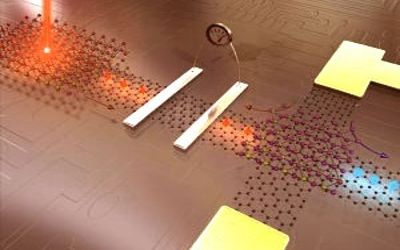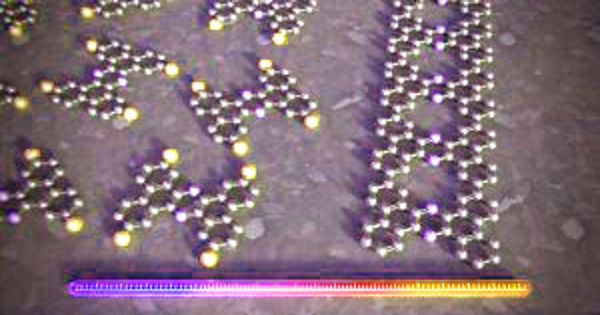Unfathomable Miniaturization – Graphene Plasmons guides to Smallest Cavity for Light
Graphene is a fascinating electronic and optical material and the study of graphene started with its magnetotransport measurements and an anomalous Berry phase. Researchers from Graphene Flagship partners ICFO, Spain, and Universidad do Minho, Portugal, together with researchers from France, Brazil, and the US, have built the smallest optical cavity to date for infrared light.
“New techniques have been on the rise searching for ways to confine light into extremely tiny spaces, millions of times smaller than current ones.”
Miniaturization has enabled so many unfathomable dreams. Shrinking down electronic circuits has allowed us to access technology like smartphones, health watches, medical probes, nano-satellites, unthinkable a couple of decades ago. The breakthrough was made possible using so-called “plasmons” – oscillations of electrons that strongly interact with light. They’ve allowed researchers to confine light to tiny spaces, but only in a single direction.
Miniaturization has pushed technology to a new era of optical circuitry. But, in parallel, it has also triggered new challenges and obstacles to overcome, for example, on how to deal with controlling and guiding light at the nanometer scale. Both the plasmonics and graphene communities are quite interested in graphene plasmonics. Due to the disadvantageous factors of metal-based plasmons, such as high loss and lack of tunability, the plasmonics community has been actively looking for new plasmonic materials. New techniques have been on the rise searching for ways to confine light into extremely tiny spaces, millions of times smaller than current ones. Researchers had earlier found that metals can compress light below the wavelength-scale. These results show promise for new miniaturized sensors that could be used in medicine, biotechnology, food inspection, and security.

Graphene Plasmons guides to Smallest Cavity for Light
In the physics community, people are more interested in the fundamental properties of Dirac plasmons in graphene. Many-body interaction is an intriguing topic for physicists. In that aspect, Graphene – a material composed of a single layer of carbon atoms, with exceptional optical and electrical properties, is capable of guiding light in the form of “plasmons”, which are oscillations of electrons that are strongly interacting with light. These graphene plasmons have a natural ability to confine light to very small spaces. Plasmons’ ability to interact with microscopic particles like atoms depends on how small a volume they can be confined to.
In a recent study published in Science, ICFO researchers Itai Epstein, David Alcaraz, Varum-Varma Pusapati, Avinash Kumar, Tymofiy Khodkow, led by ICREA Prof. at ICFO Frank Koppens, in collaboration with researchers from MIT, Duke University, Université Paris-Saclay, and Universidad do Minho, have succeeded to build a new type of cavity for graphene plasmons, by integrating metallic cubes of nanometer sizes over a graphene sheet. Their approach enabled us to realize the smallest optical cavity ever built for infrared light, which is based on these plasmons.
Itai Epstein, the first author of the study, told SciTech Daily, “the main obstacle that we encountered in this experiment resided in the fact that the wavelength of light in the infrared range is very large and the cubes are very small, about 200 times smaller, so it is extremely difficult to make them interact with each other.”
In their experiment, they used silver nanocubes of 50 nanometers in size, which were sprinkled randomly on top of the graphene sheet, with no specific pattern or orientation. This allowed each nanocube, together with graphene, to act as a single cavity. Then they sent infrared light through the device and observed how the plasmons propagated into the space between the metal nanocube and the graphene, being compressed only to that very small volume.
In order to overcome this, they used a special phenomenon – when the graphene plasmons interacted with the nanocubes, they were able to generate a special resonance, called magnetic resonance. As Epstein clarifies, “A unique property of the magnetic resonance is that it can act as a type of antenna that bridges the difference between the small dimensions of the nanocube and the large scale of the light.”
To achieve their results, the team used 50-nanometer nanocubes randomly sprinkled on top of the graphene sheet. The results of the study are extremely promising for the field of molecular and biological sensing, important for medicine, biotechnology, food inspection, or even security since this approach is capable of intensifying the optical field considerably and thus detect molecular materials, which usually respond to infrared light. When they sent infrared light through the device, each nanocube combined with the graphene was able to act as a single optical cavity.















